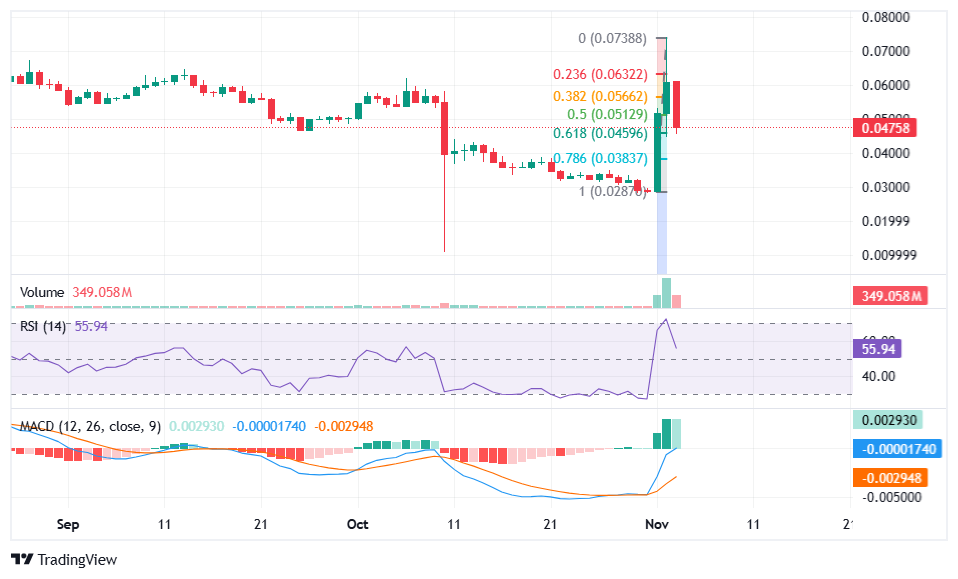ZKsync price movements have dominated headlines since the protocol’s Atlas upgrade went live, and the ZK token has seen seismic volatility as a result.
The Atlas upgrade and public praise from Ethereum co-founder Vitalik Buterin pushed ZK into the spotlight, prompting a rapid repricing and renewed debate over whether technical achievements can translate into sustained on-chain adoption.
ZKsync has been doing a lot of underrated and valuable work in the ethereum ecosystem. Excited to see this come from them!
Atlas upgrade sets a new technical benchmark
Copy link to section
The Atlas upgrade represents a major milestone in ZKsync’s evolution.
It introduces near one-second ZK finality, full multi-VM compatibility including EVM support, and throughput exceeding 15,000 transactions per second in benchmark tests.
Everything you need to know about the Atlas Upgrade. (Explained simply)
Together, these improvements aim to enhance scalability and reduce latency across Ethereum’s Layer-2 ecosystem.
Atlas also incorporates Airbender, a high-performance zkVM designed to deliver record-fast single-GPU verification times.
Alongside this, a new shared-liquidity framework connects Layer-1 and Layer-2 liquidity pools, improving capital efficiency and interoperability.
Vitalik Buterin’s endorsement significantly amplified the upgrade’s visibility.
He described zkSync’s work as “underrated but valuable,” signalling strong validation from one of Ethereum’s most influential voices.
The market responded quickly, with the ZK token surging more than 120% from Saturday’s lows, before profit-taking triggered a sharp retracement.
ZK retraces after profit-taking and risk-off sentiment
Copy link to section
Today’s price correction follows a familiar pattern of “buy the rumour, sell the news.”
After rallying strongly on Vitalik’s comments and the Atlas launch, ZK fell roughly 26.2% within 24 hours, sharply underperforming the broader crypto market, which declined by about 2.75% during the same period.
Technical indicators had warned of an overheated rally, with the RSI reaching 72.5 — its highest reading since May — indicating overbought conditions.

The token also rejected resistance near the 23.6% Fibonacci retracement level at $0.06322, confirming exhaustion after a rapid climb.
High turnover ratios and elevated volatility further accelerated the pullback.
Broader market dynamics reinforced the decline with Bitcoin dominance rising to 59.66% as capital rotated out of altcoins, while the Crypto Fear & Greed Index slipped to 36, reflecting growing caution.
Data from derivatives markets also reveals a 22.7% monthly drop in open interest for ZK, signalling reduced leverage and waning speculative appetite.
Adoption and fundamentals remain in focus
Copy link to section
While Atlas represents a leap forward in performance, zkSync’s on-chain adoption still lags its technical reputation.
Daily active users on the mainnet remain in the low tens of thousands, and total value locked (TVL) stands in the tens of millions.
The broader zkSync ecosystem, however, continues to expand, with multi-chain TVL figures running into the billions.
Institutional interest offers a potential tailwind. The project’s enterprise-focused solution, Prividium, is reportedly being tested by more than 30 banks exploring zero-knowledge settlement models.
But translating early pilots into sustained activity will be key to converting technical excitement into measurable economic value.
ZKsync price forecast: the key ZK price levels to watch
Copy link to section
Analysts highlight $0.0407 as the critical support zone for ZKsync price stability.
A breakdown below this level could expose the token to deeper losses toward $0.0320.
On the upside, resistance levels are identified at $0.0568, $0.0657, and $0.0759.
A confirmed breakout above the first resistance could signal a short-term momentum shift and renewed investor confidence.
For now, ZK’s near-term outlook remains finely balanced between strong long-term fundamentals and fragile short-term sentiment.
The Atlas upgrade and Vitalik Buterin’s backing have reaffirmed zkSync’s position as a leading Layer-2 innovator on Ethereum.
However, the next phase of growth will depend on whether the ZKsync price can find stability and whether real-world adoption follows the technology’s promise.

